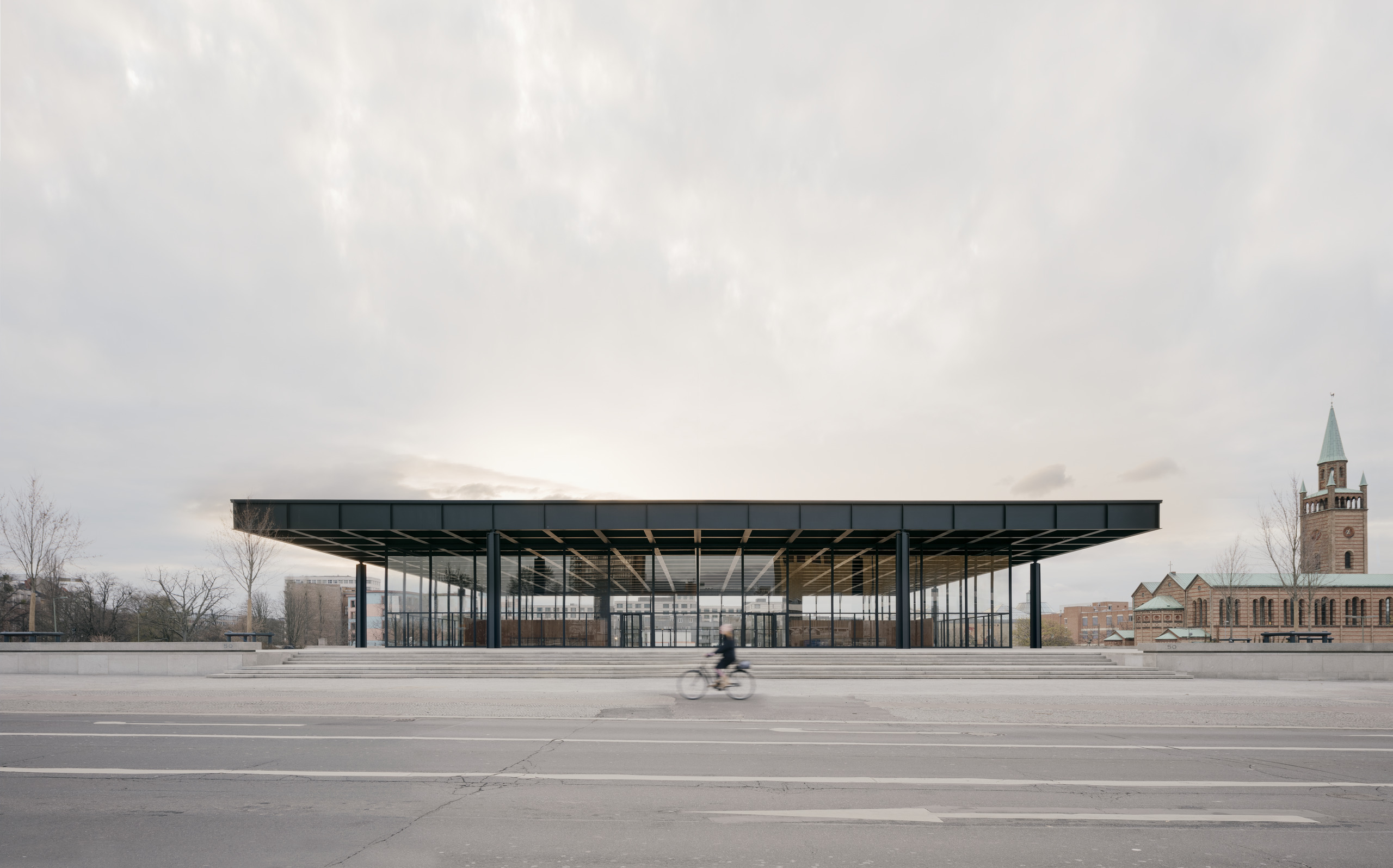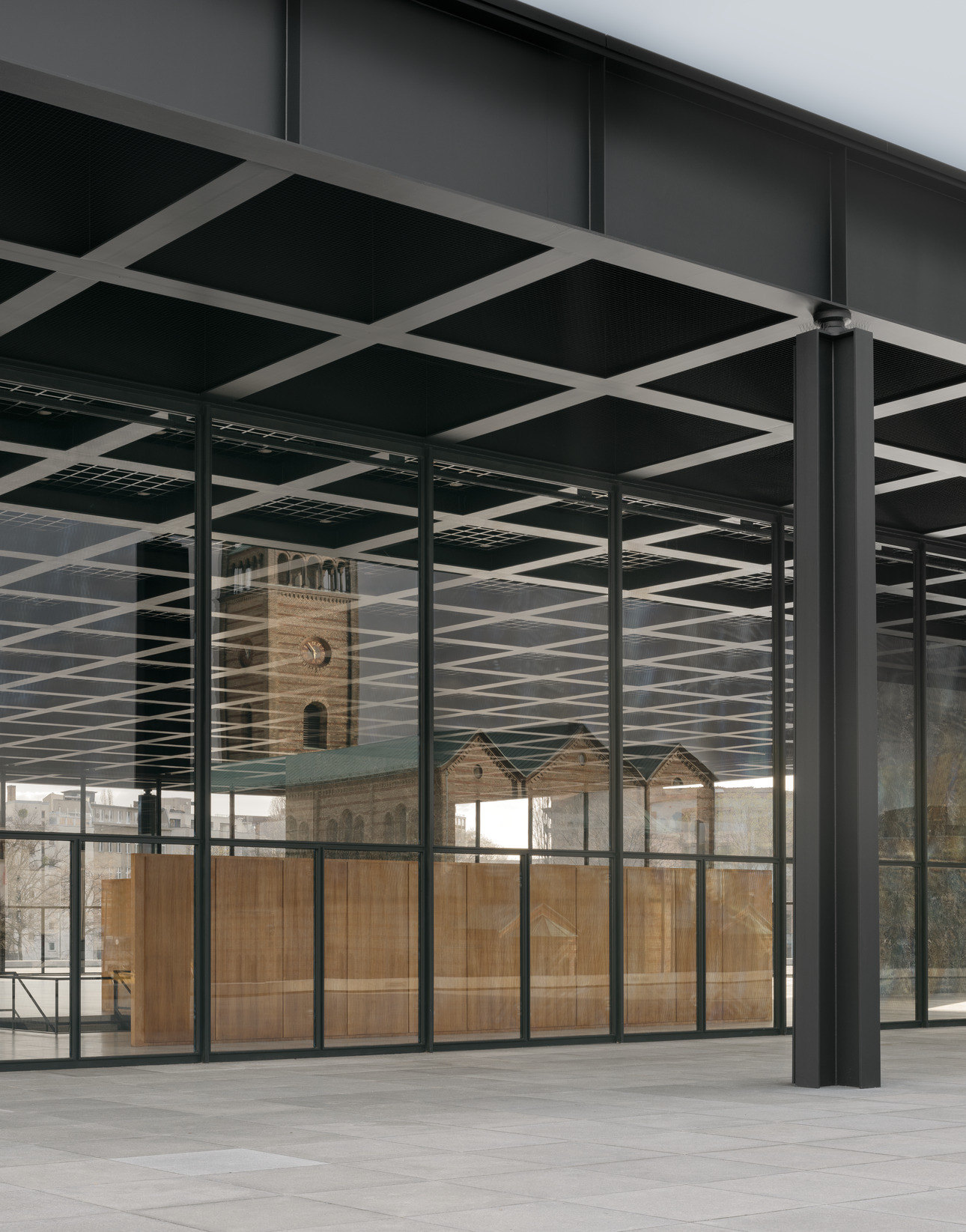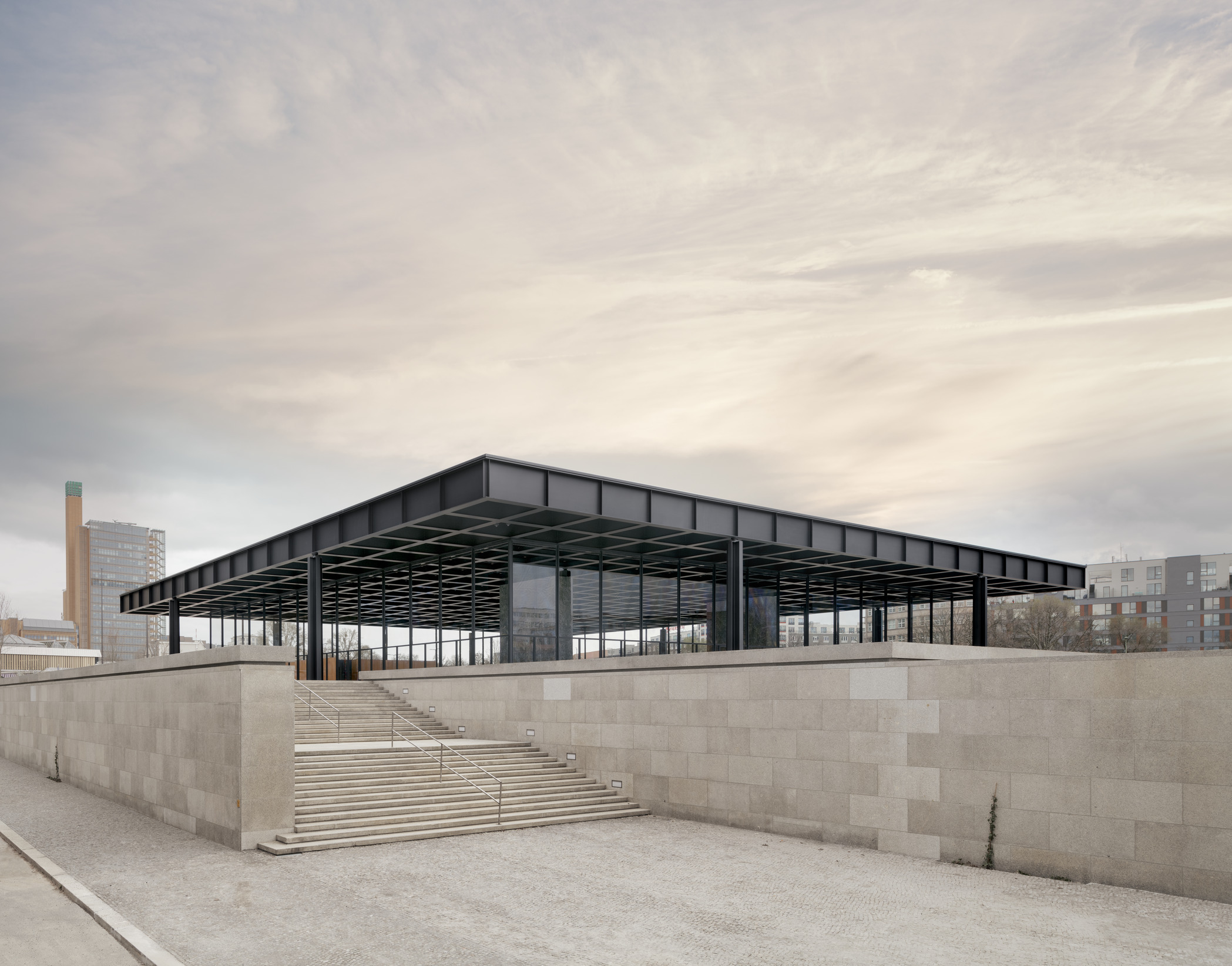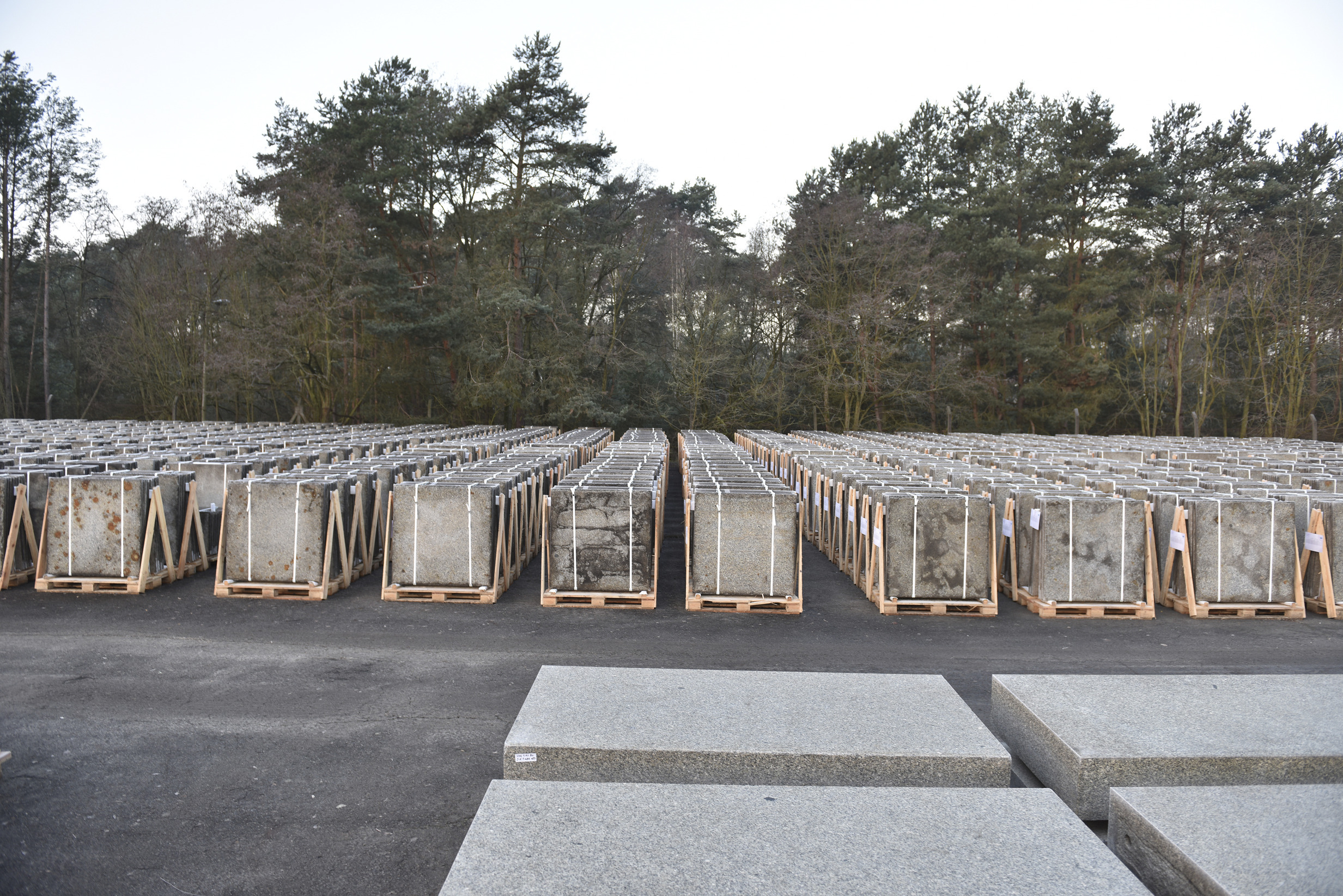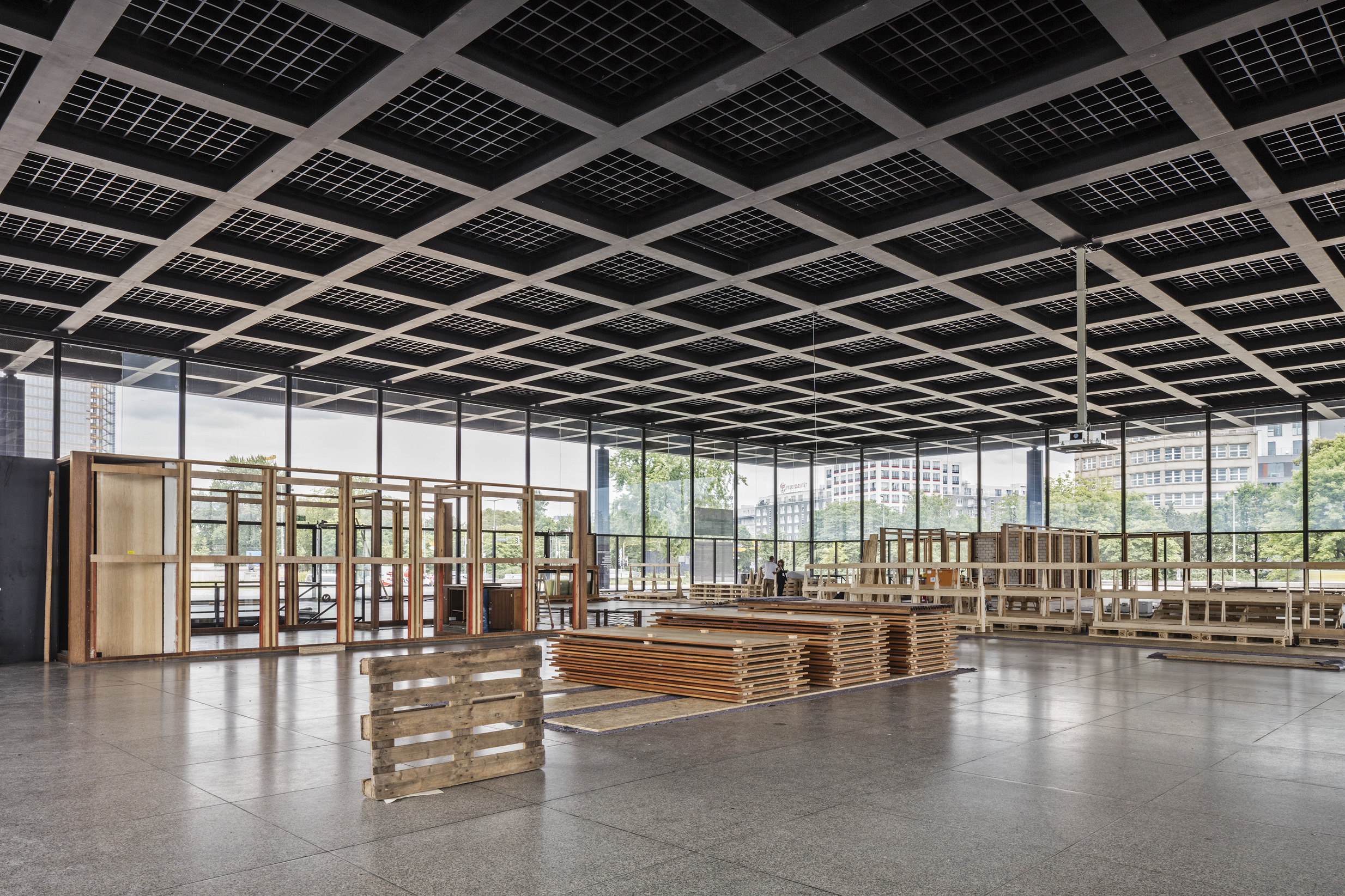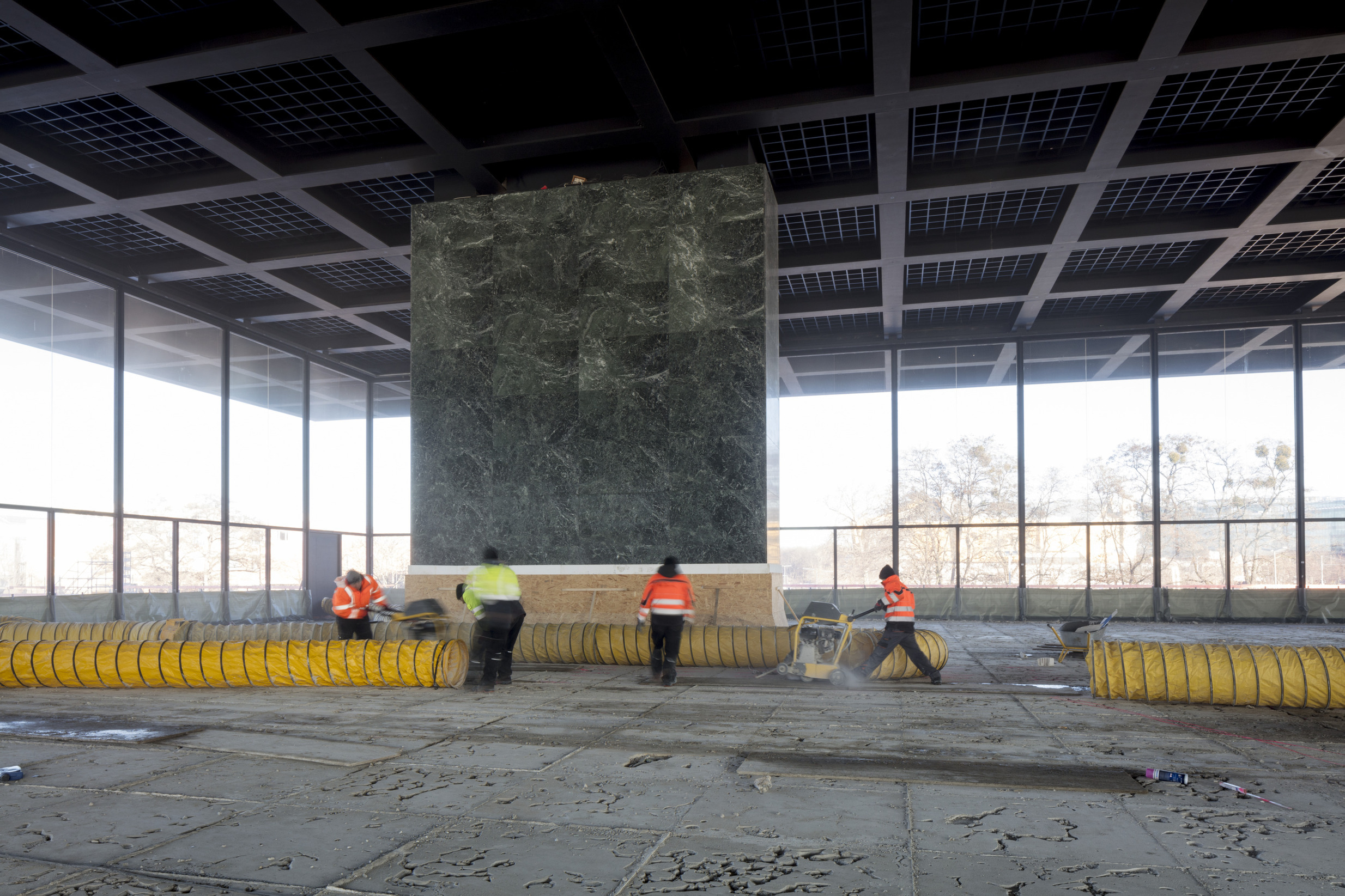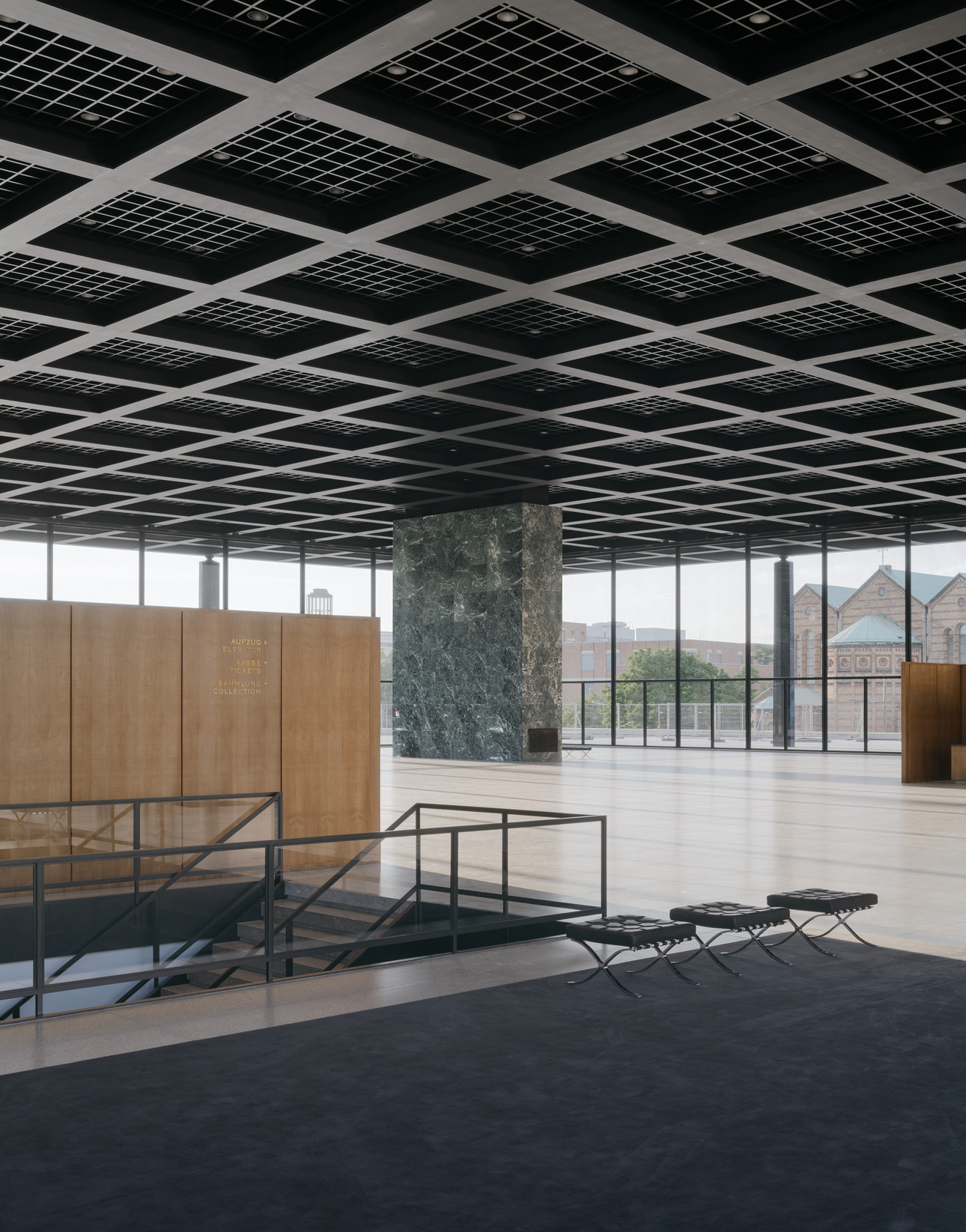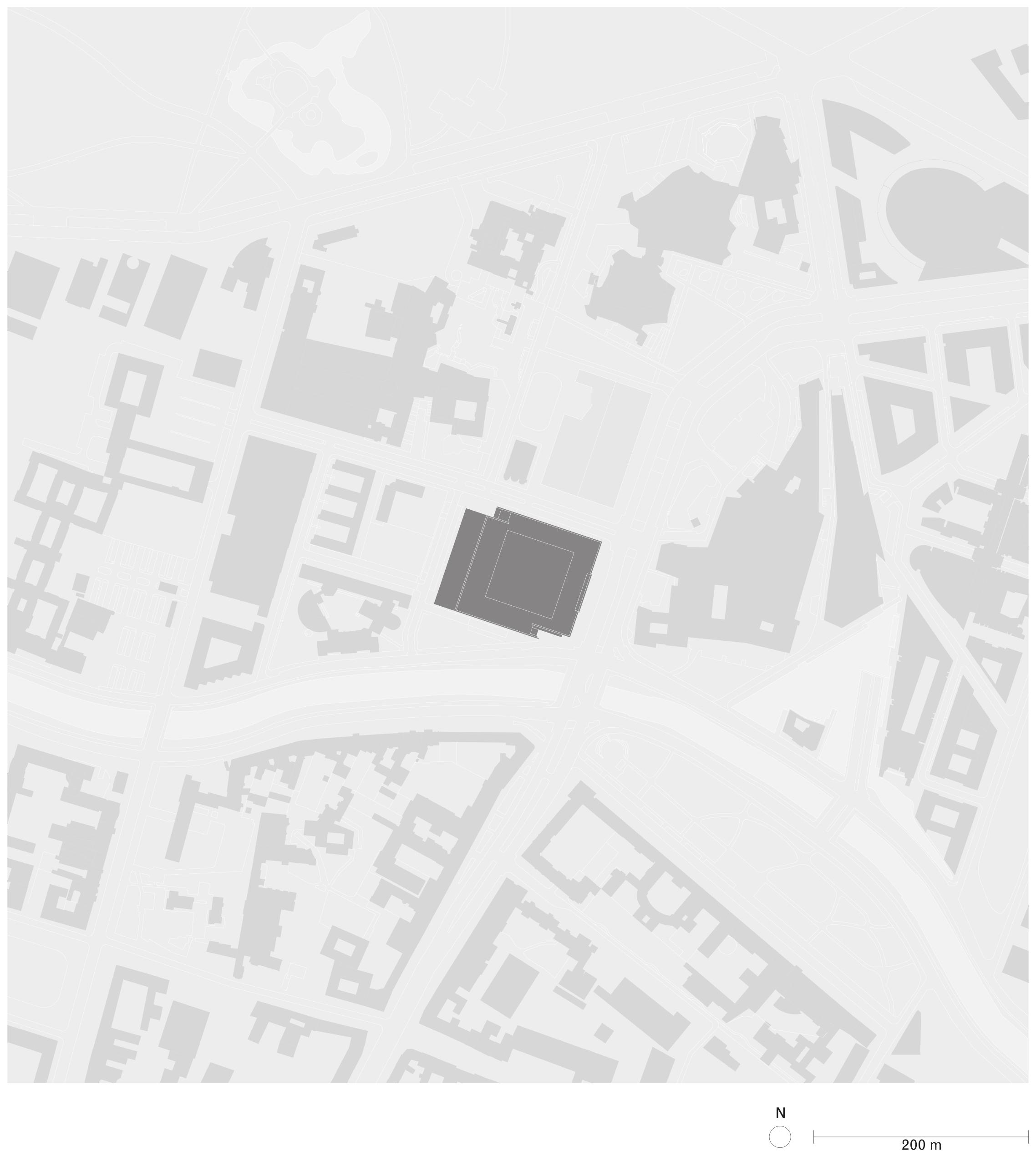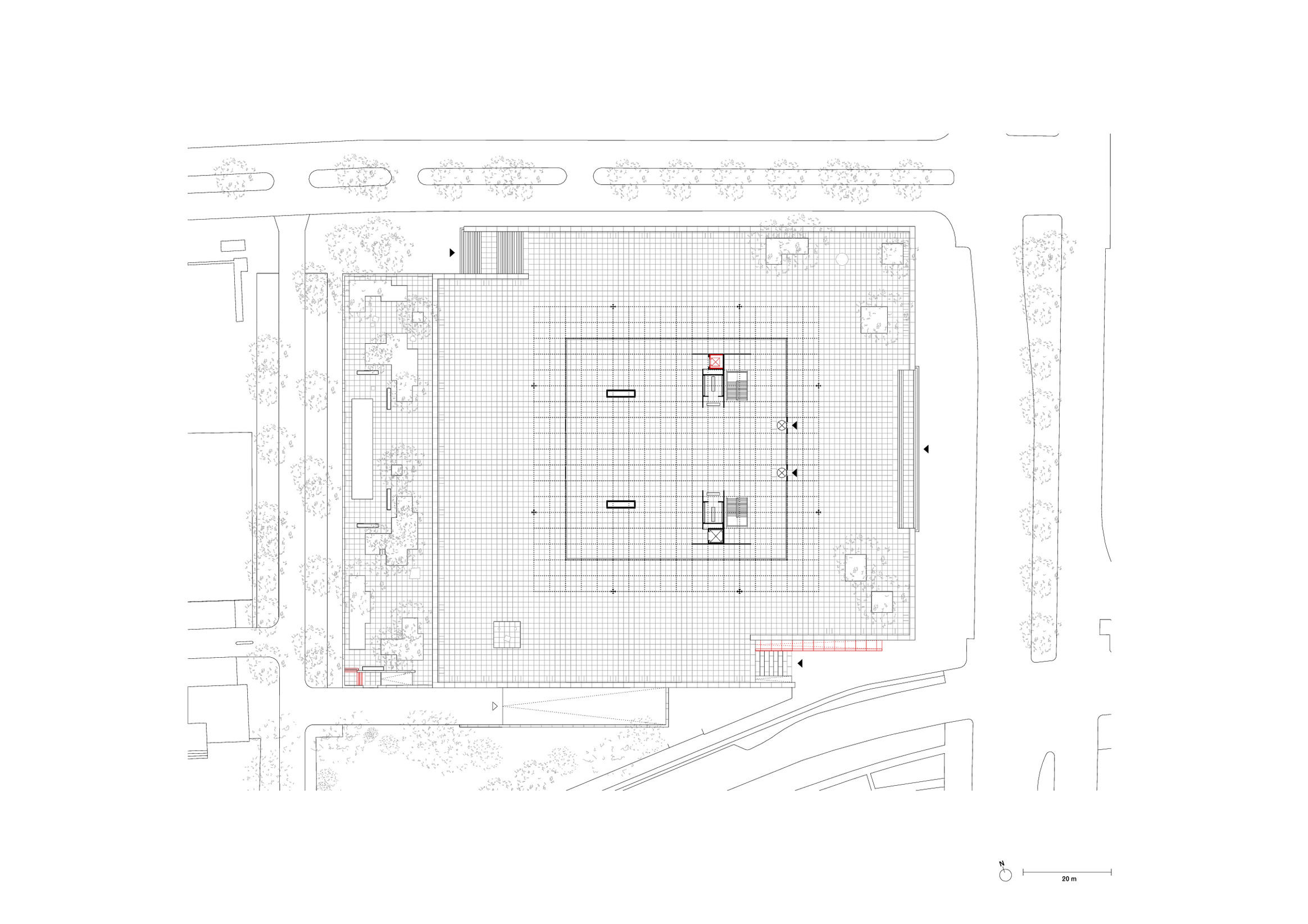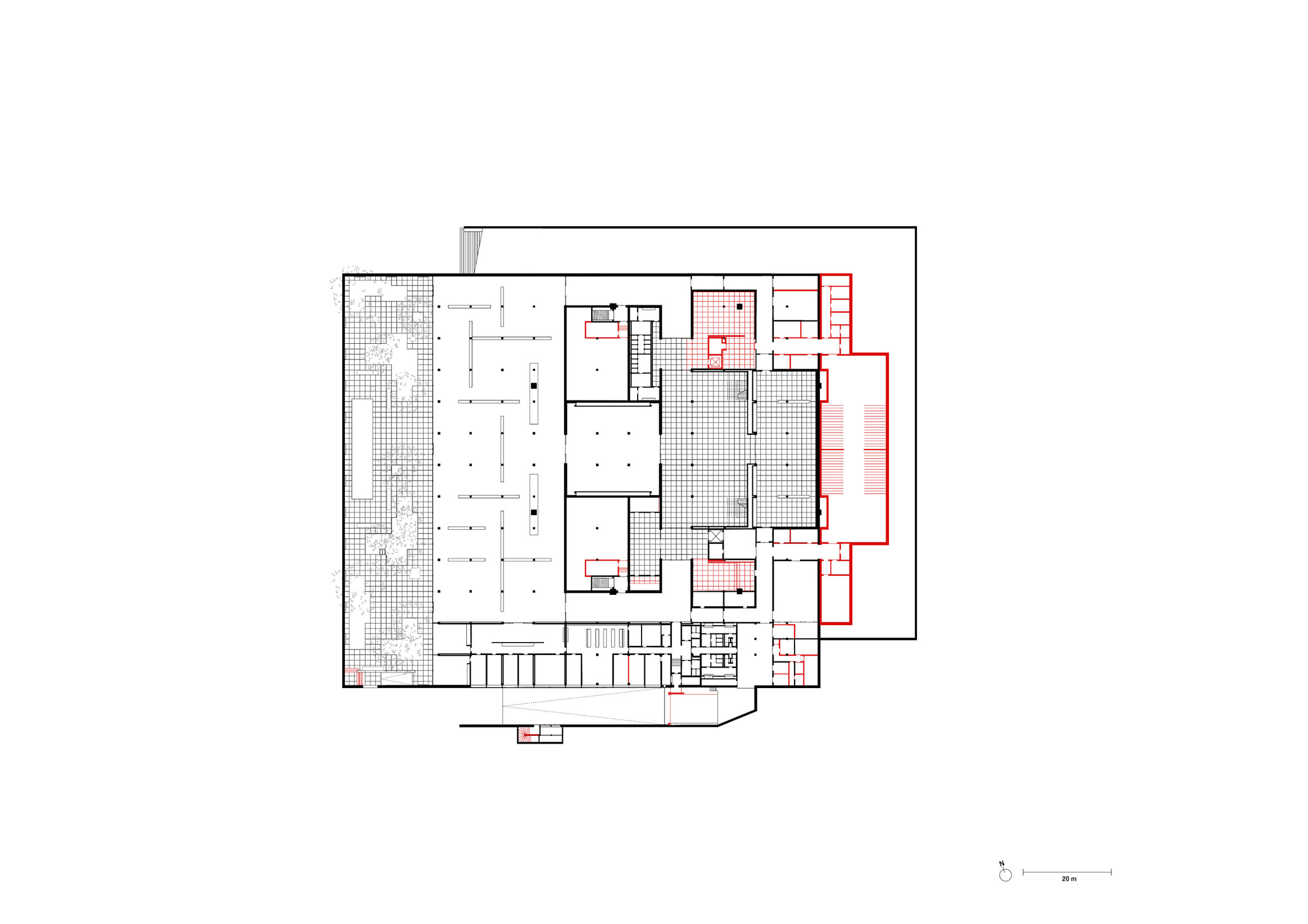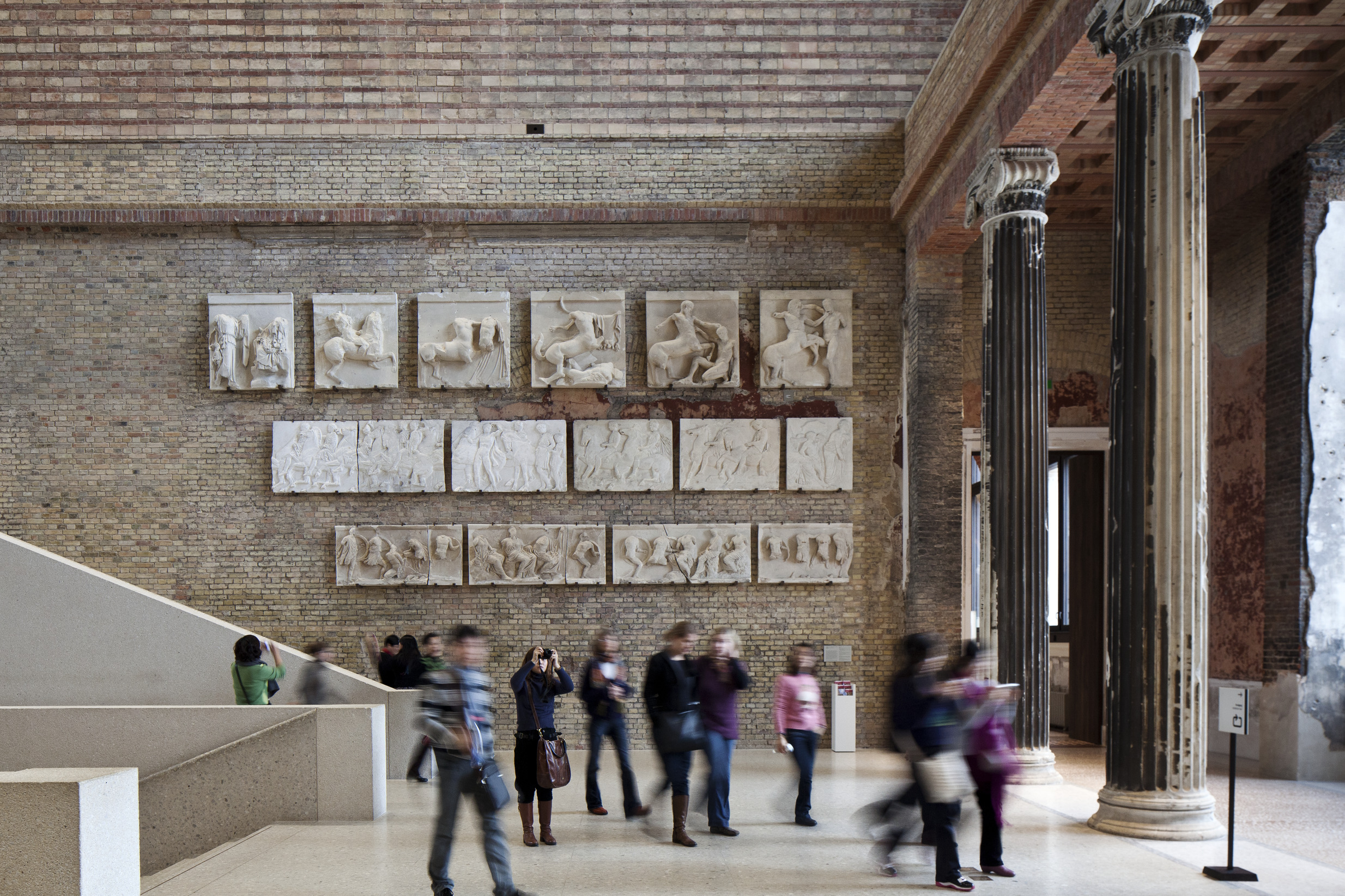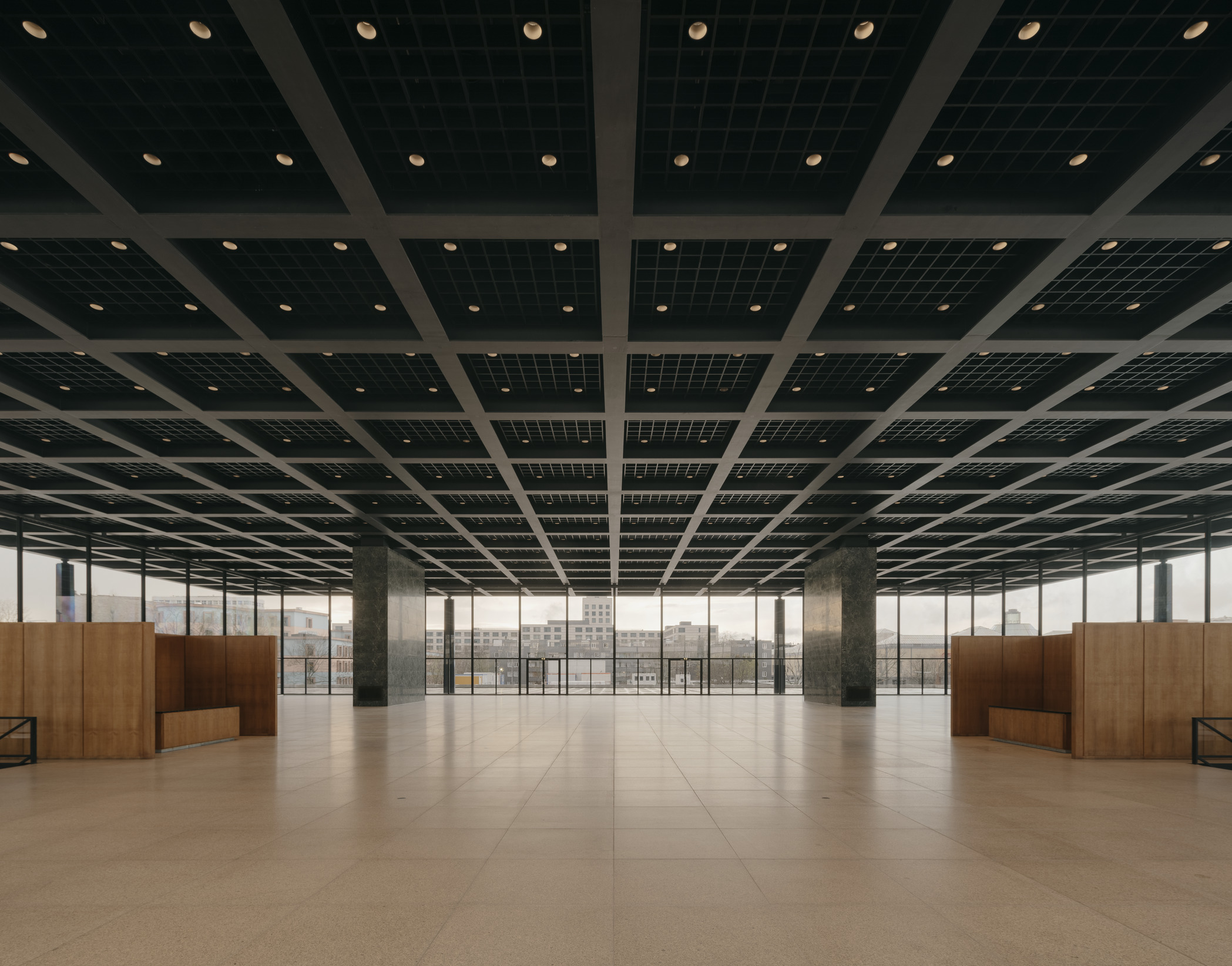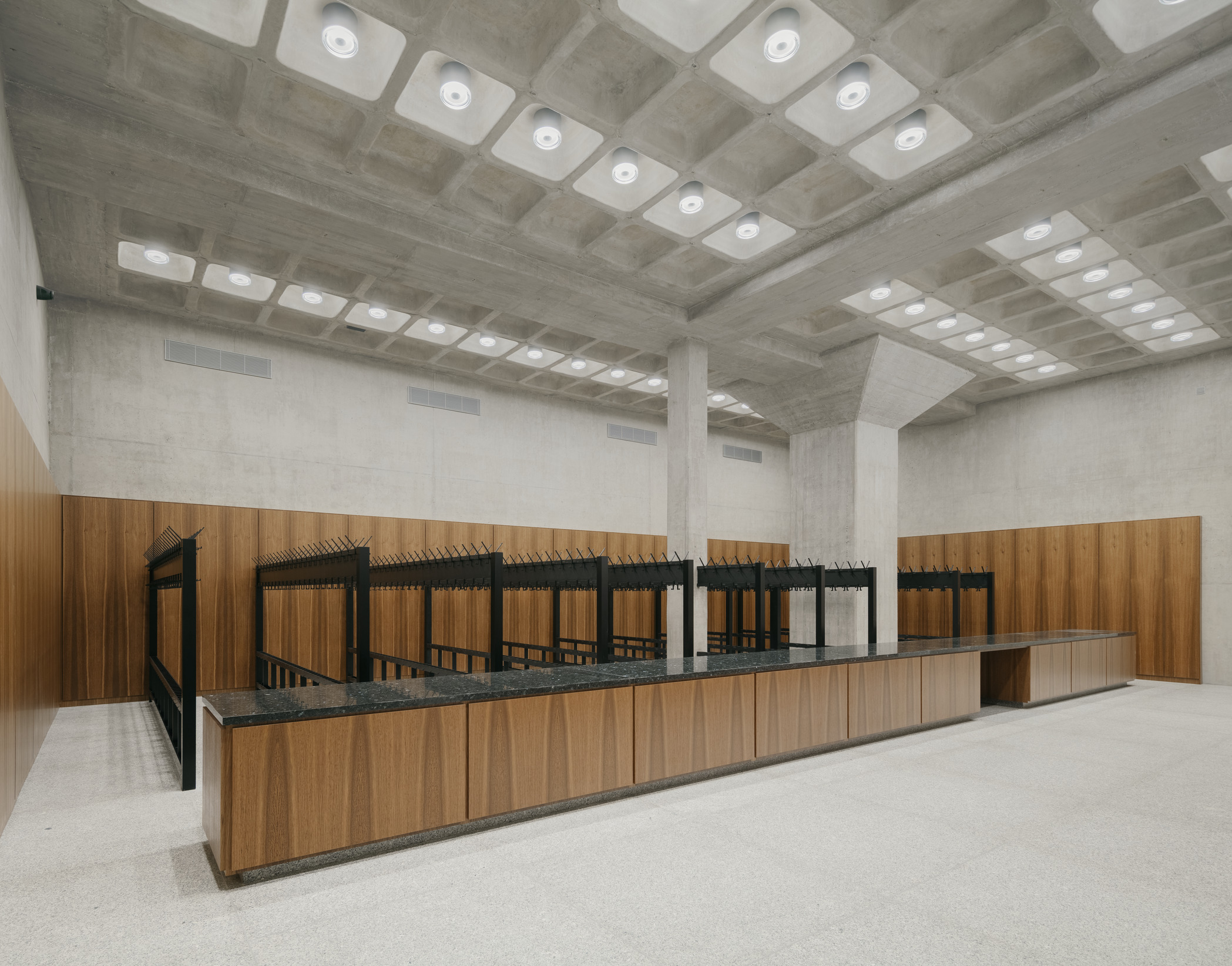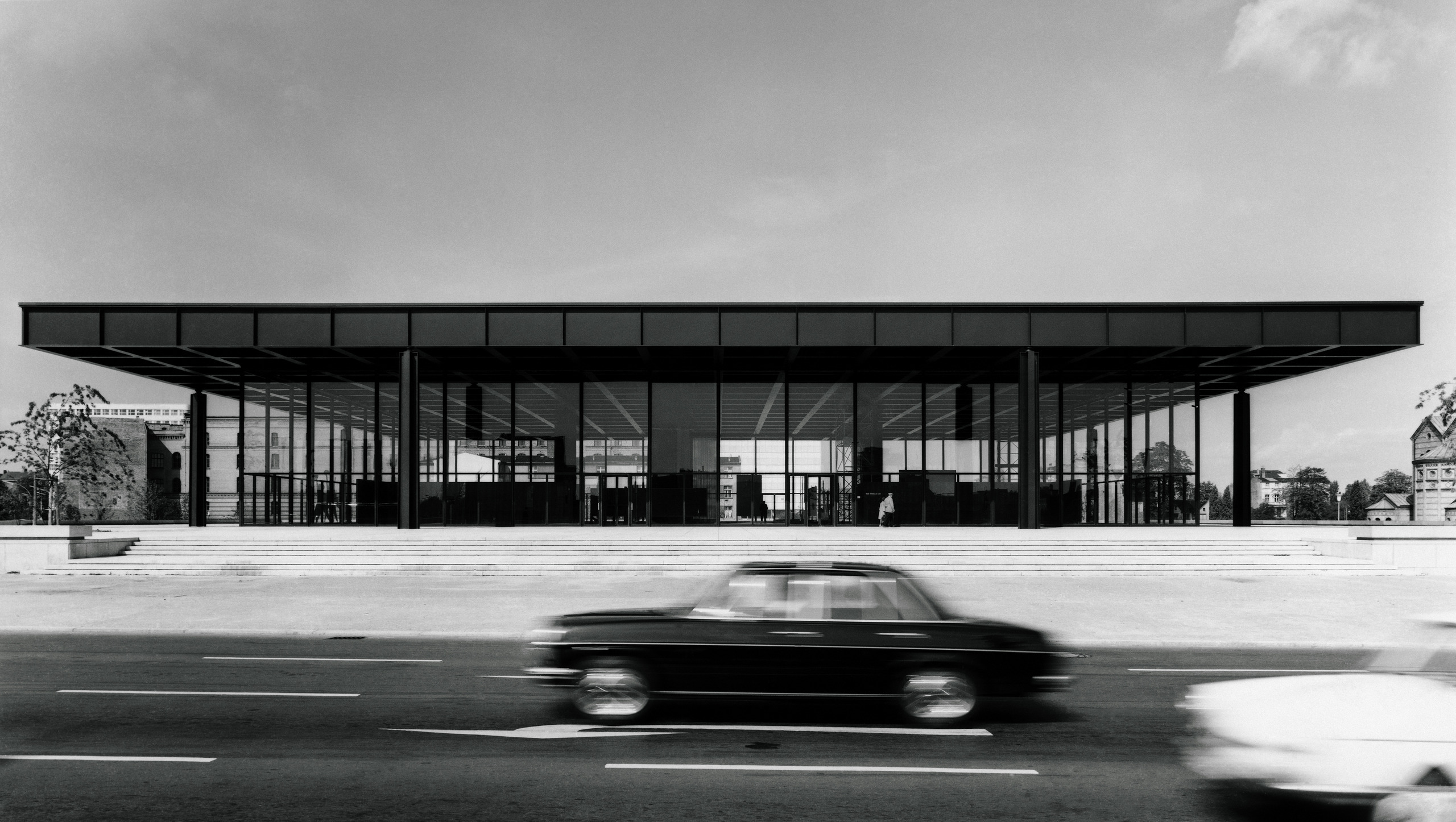Neue Nationalgalerie refurbishment
Berlin, Germany
2012–21
The Neue Nationalgalerie in Berlin is an icon of twentieth-century architecture. Planned and built from 1963 to 1968, the steel and glass structure is the only building designed by Ludwig Mies van der Rohe in Europe after his emigration to the USA.
After almost fifty years of intensive use, the listed building required a comprehensive refurbishment. The existing fabric has been refurbished and upgraded to current technical standards with a minimum of visual compromise to the building’s original appearance. The functional and technical upgrades include air-conditioning, artificial lighting, security, and visitors’ facilities, such as cloakroom, café and museum shop, as well as improving disabled access and art handling.
The necessity of an extensive repair of the reinforced concrete shell and the complete renewal of the technical building services required an in-depth intervention. In order to expose the shell construction, around 35,000 original building components, such as the stone cladding and all the interior fittings, were dismantled. After their restoration and modification where necessary, they were reinstalled in their precise original positions.
The key to the complex planning process for this project was finding a suitable balance between monument conservation and the building’s use as a modern museum. The unavoidable interventions to the original fabric within this process had to be reconciled with preserving as much of the original substance as possible. Though the essential additions remain subordinate to the existing design of the building, they are nevertheless discreetly legible as contemporary elements. The refurbishment project does not represent a new interpretation, but rather a respectful repair of this landmark building of the International Style.
Ground floor plan, new elements marked in red
Lower ground floor plan, new elements marked in red
Data and credits
- Tender procedure
- 2012
- Project start
- 2012
- Construction start
- 2016
- Completion
- 2021
- Opening
- 2021
- Gross floor area
- 13,900m²
- Client
- Stiftung Preußischer Kulturbesitz represented by the Bundesamt für Bauwesen und Raumordnung
- User
- Nationalgalerie – Staatliche Museen zu Berlin
- Architect
- David Chipperfield Architects Berlin
- Partners
- David Chipperfield, Martin Reichert, Alexander Schwarz
- Project architect
- Daniel Wendler, Michael Freytag
- Project team
- Concept design to Developed design: Marianne Akay, Thomas Benk, Matthias Fiegl, Anke Fritzsch, Dirk Gschwind, Anne Hengst, Franziska Michalsky, Maxi Reschke, Sebastian Barrett, Alexander Bellmann, Martina Betzold
Technical design: Anke Fritzsch, Dirk Gschwind, Lukas Graf, Martijn Jaspers, Christopher Jonas, Franziska Michalsky, Maxi Reschke, Christian Vornholt, Lukas Wichmann
Visualisation: Dalia Liksaite, Simon Wiesmaier
Fit-out: Yannic Calvez, Ute Zscharnt - Executive architect
- BAL Bauplanungs und Steuerungs GmbH, Berlin (Procurement, construction supervision)
Project management: Kerstin Rohrbach - restoration consultant
- Pro Denkmal GmbH, Berlin
- Landscape architect
- TOPOS Stadtplanung Landschaftsplanung Stadtforschung, Berlin
- Structural engineer
- GSE Ingenieurgesellschaft mbH Saar, Enseleit und Partner, Berlin
- Services engineer
- Ingenieurgesellschaft W33 mbH with Domann Beratende Ingenieure GmbH, Berlin
- Façade engineer
- DS-Plan, Stuttgart
- Building physics
- Müller-BBM GmbH, Berlin
- Fire consultant
- HHP West Beratende Ingenieure GmbH, Bielefeld
- Acoustic consultant
- Akustik-Ingenieurbüro Moll GmbH, Berlin
- Lighting design
- Arup Deutschland GmbH, Berlin
- Photography
- Simon Menges, Ute Zscharnt, Christian Martin, Reinhard Friedrich
- Selected Awards
- RIBA International Awards for Excellence 2024
European Award for Architectural Heritage Intervention 2023, Category Built Heritage
Docomomo Rehabilitation Award 2021, Category Enhanced Masterpieces
European Union Prize for Contemporary Architecture – Mies van der Rohe Award 2020,
Shortlist
- Links
- smb.museum
